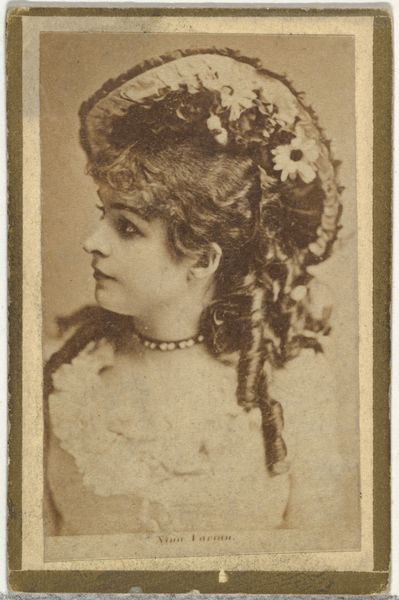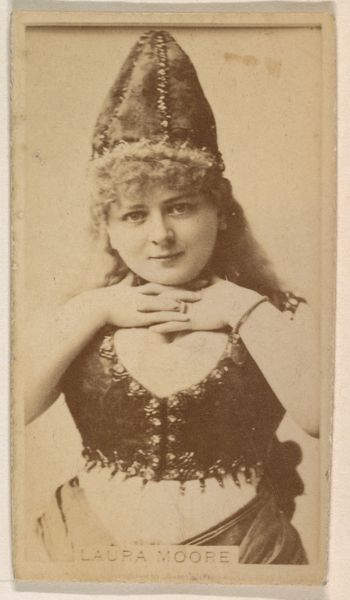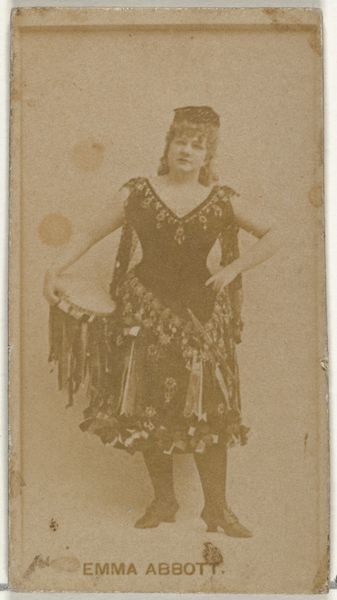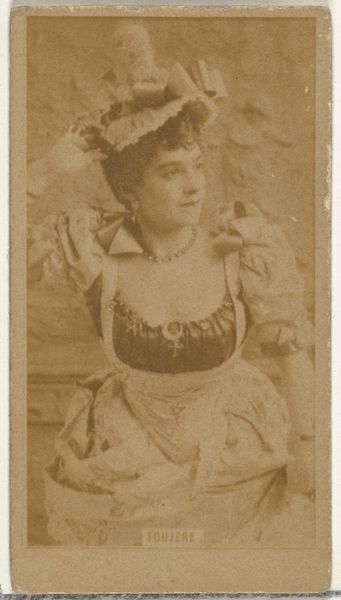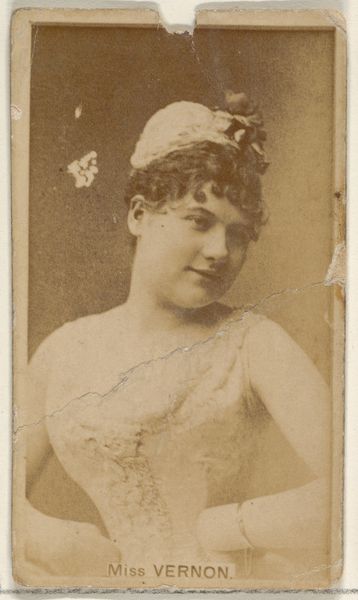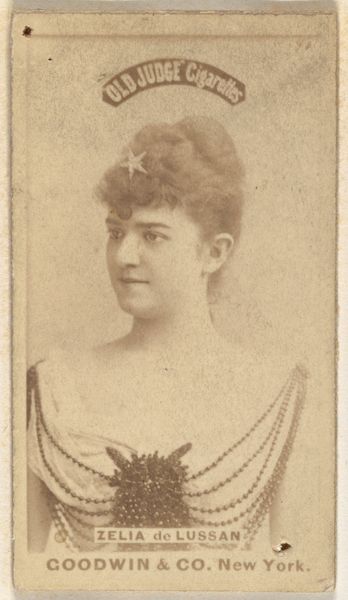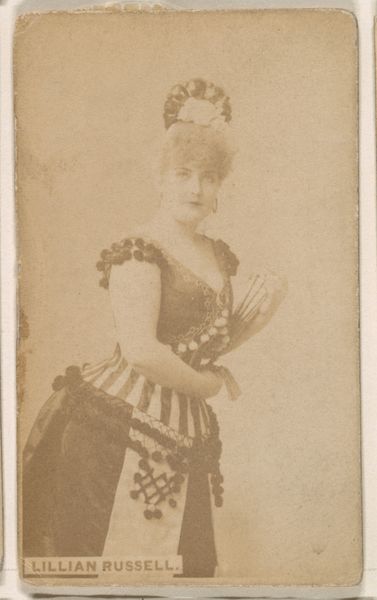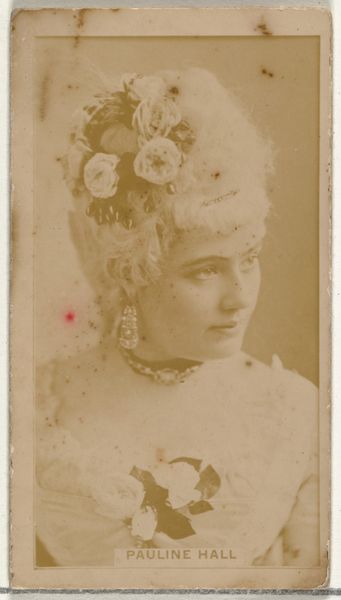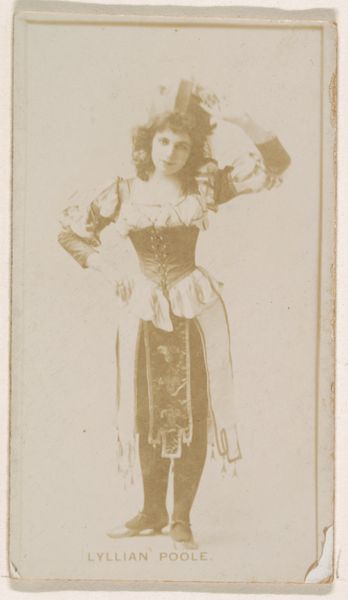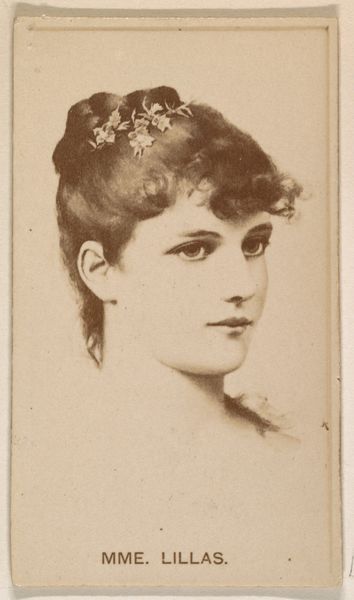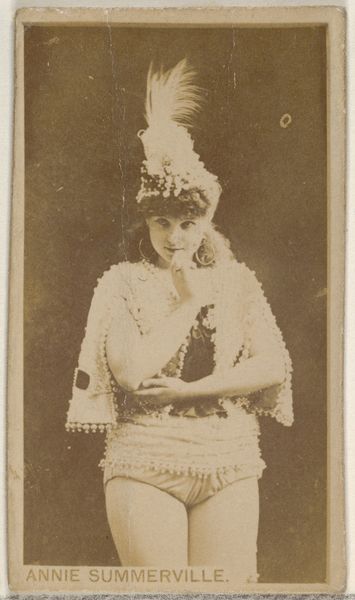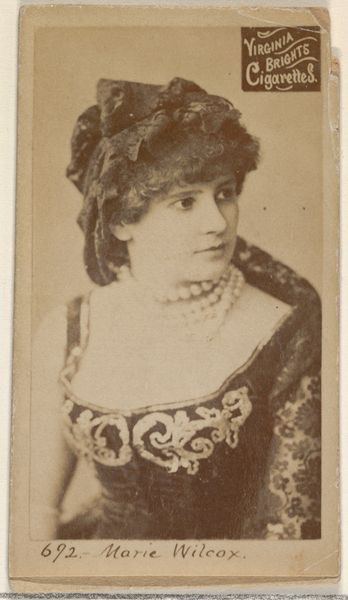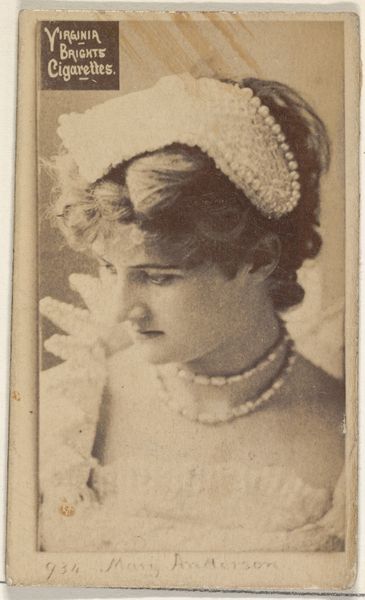
Janauscheck in European Costume from 1485-1510, from the set Actors and Actresses, First Series (N70) for Duke brand cigarettes 1888 - 1889
0:00
0:00
Dimensions: Sheet: 2 3/4 x 1 1/2 in. (7 x 3.8 cm)
Copyright: Public Domain
Curator: Let’s take a look at this small, colourful print. It's part of a series called "Actors and Actresses" created between 1888 and 1889 by W. Duke, Sons & Co. for their Duke brand cigarettes. The work depicts Janauscheck in European costume dating back to the late 15th, early 16th century. Editor: The first thing that strikes me is the palette. It’s vibrant, almost shockingly so, given the historical reference. It's surprising for what is essentially cigarette packaging—colourful pencil and watercolour illustrations, quite nicely done, on something so disposable. Curator: It’s interesting to see the historical costume represented in this format. Janauscheck was a popular actress, and this image suggests a desire to elevate the product through association with high culture, appealing to aspirations and consumer desires. These cards were collectible, promoting brand loyalty but also acting as visual tools for a wider public. Editor: The materials also play a part. The thin paper stock speaks to mass production, yet the detail in the illustration and the applied colour gives it an air of artisanal craft, even though it was undoubtedly printed en masse. What were the working conditions like for those creating these cards? How were they distributed and collected? The labour of making these is worth further investigation. Curator: Indeed. The image is striking, clearly designed to capture attention and evoke a sense of quality and luxury in a time when advertising was still developing. It shows how mass-produced items leveraged history and celebrity to build perceived value. It catered to a growing consumer market eager to engage with narratives of elegance. Editor: This blend of industrial production with apparent artisanal flair brings the contradiction to light. Was it empowering consumers, or were they unknowingly being used for a commercial narrative? Thinking about the circulation of imagery and consumer behaviour through such everyday objects offers plenty to unpack. Curator: Looking at how this particular brand deployed art reveals much about societal values at the time, the commodification of performance and art for capital gain. It provides valuable context about our visual culture. Editor: Ultimately, these trading cards illuminate our culture’s connection between consumption, identity, and art. They offer insights into a period when material objects started speaking volumes about our place in the social order.
Comments
No comments
Be the first to comment and join the conversation on the ultimate creative platform.
